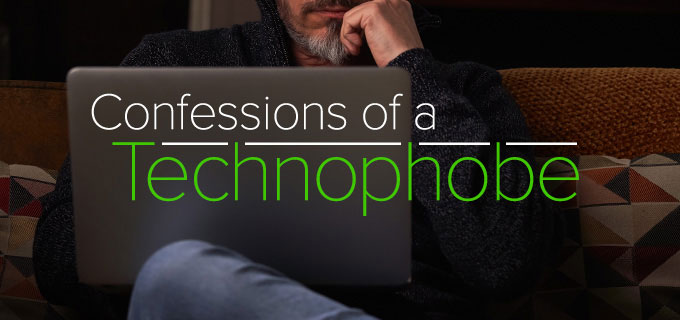
91. First Movie Entertainment for Black Audiences in South Africa
Television finally arrived in South Africa in 1976, despite many Nationalist Party supporters kicking and screaming against this “radical” development, which they were certain would open the eyes of the Black population as to what the rest of the world was all about. They weren’t wrong! It probably contributed to the growing unrest and protests from the Black community which saw some of the worst rioting the country had seen in 1976. Although this was mostly about the poor quality of Black education, television did begin to bring the people of South Africa closer to the global community.
However, for a long time there was no TV content specifically aimed at Black communities. Once again, enterprising filmmakers realized that there was huge demand for entertainment for Black audiences. Ironically, one of the first people to recognize this was an Afrikaner, Tonie van der Merwe. The government was persuaded to offer a subsidy for pictures made specifically for the African market and Tonie launched a cottage industry which quickly became a massive money spinner for Tonie and his cohorts. These pictures were all shot on 16mm film with ridiculously small budgets and then distributed into the many African townships around the country, where a number of black entrepreneurs screened 16mm movies in halls, shebeens (Black drinking dens) or even in the open air with white sheets serving as a screen.
I had not taken much notice of this growing phenomenon until I was introduced to Tonie as an up-and-coming screenwriter. As usual, work was hard to come by and I immediately accepted a ridiculously low fee to write a screenplay for Tonie.

He had a basic idea, but I wrote the screenplay. I have just Googled the name of the movie “Joe Bullet” and found that the movie has been cleaned up after 48 years and re-released as a classic of the time. It is heralded as the first picture with an all-Black cast made in South Africa for Black audiences. It was originally screened in the Eyethu Cinema in Soweto (a huge African Township on outskirts of Johannesburg) without censorship permission – and banned after two screenings. There was no logical reason for the banning as it did not contain any political elements. The purpose was simply to entertain Black audiences with a story that was a cross between the US TV series “Shaft” and a Black James Bond. It was subsequently unbanned and ran for another 18 years in many small 16mm township venues around the country.
Tonie claims to have made another 400 pictures for Black audiences. I know his sons took over the productions at some point, but Tonie was always in the background. What truly saddens me, however, is that Tonie now claims to have written the picture. I only discovered this today and will be taking legal advice.
I very much doubt if there would be any further monetary gain by insisting my authorship, but I am proud of being part of the history of the South African cinema. Even though I doubt if the picture was made for any purpose other than taking advantage of the subsidy system, it nevertheless did afford an increasing number of Black actors an opportunity to get work and experience in the medium of film. It also afforded some home-grown entertainment for the African population, who, like the Afrikaners, were starved of anything except jazz and traditional music groups that performed in the townships.
I was also directly responsible for getting Ken Gampu, who was a friend of mine, the lead role. He was the only member of the cast with any real movie experience. He had acted in “Rogue Lion” the previous year (which was my first screenplay to be produced and screened both locally and internationally). Ken had earlier appeared with Stanley Baker and Juliet Prowse in “Dingaka” in 1964, followed by “The Naked Prey” with Cornel Wilde in 1965.
Ken had toured the US with Harry Belafonte and later appeared in “The Wild Geese,” “Zulu Dawn” and “The Gods must be Crazy,” all major successful pictures internationally. He was dubious about appearing in “Joe Bullet,” but like most South African actors, Black and white, there were few roles available in movies, so he took it. I also assisted on the production team for a while – and was furious: I had devised a scene on a gold mine shaft where the villain rolls a heavy steel container down the ladder of the mine shaft, while Joe Bullet is climbing up. (I had worked out that it could be filmed with the container rolling down in one shot, without Ken, and edited to appear that he was nearly hit by it.)
I had to go to attend to something else and got back just as the camera rolled on the scene. To my horror, the director had decided that it would be better to film the container rolling down with Ken on the ladder. He would swing aside as the container came down. In the event, the container hit an obstruction halfway down, shot up in the air, came down again, clipping Ken on the side of the head. Another fraction of an inch and Ken would have died. He was knocked out and I helped to get him to hospital. Fortunately, he was only concussed and suffered no great damage; but it led to my leaving the set for good.
“Joe Bullet” went on to set a trend that built an entirely new film-related industry. Anti-Apartheid activists claimed that these movies were Nationalist propaganda. I cannot speak for all of them, but “Joe Bullet” certainly wasn’t political in any sense. It was a tongue-in-cheek action movie with fast sports cars, glamorous women, karate moves, guns, knives and fast action.
Did these pictures exploit Black talent? Certainly, but they did at least provide some income and opportunities for Black talent. I’m reminded of the low-budget movies known as “B” pictures in the US in the 1930s, ’40s and ’50s, that were churned out by the dozens with budgets as low as $200,000. A number of directors emerged from this hectic production-line period to make important pictures for the major studios. No doubt some of the actors made the transition as well.
In the case of the South African “B” pictures made for Black audiences, the industry was initially controlled by the Van der Merwe family and later other white filmmakers. However, as cracks began to appear in the granite walls of Apartheid, a few Black directors appeared and began to make these still-low-budget 16mm pictures. The themes of these pictures became increasingly true to the African population; and elements critical of the Apartheid system were slipped through the rigid censorship process.
Perhaps the best known of the African township playwrights was Gibson Kente. He wrote 23 plays and musicals as well as three television series when Black television channels were finally created to service the African community. I was approached by Gibson and shown a screenplay version he had written of one of his most popular plays titled “How Long?” From memory, it ran for about 250 pages and would have been hopelessly over-length. He asked for my comments.
I told him that I liked the story that dealt with a Black youth in the townships who wanted to visit his homeland but did not possess a pass. The pass system required that all people of color possess a passbook which enabled them to travel to other parts of South Africa, such as their homeland. Equally, if a person did not have a pass, he or she could be arrested. The police carried out frequent checks on people in the street or on buses or trains, even homes. The jails were filled to overflowing with people arbitrarily arrested for transgressing pass laws.
Gibson’s play and musical were a poignant story about the travails of the youth and, although clearly critical of the pass laws, I felt that it could be written in a way that it was not an outright attack, but the message was plain enough. I was optimistic that we could squeak our way around the censors.
Gibson agreed to my edit of the screenplay. It was very difficult to shorten because he wanted to keep much of the material in. I submitted a first draft to him and asked if he would tell me what else I could cut to take out at least another half an hour’s screen time. He was pleased with my draft and said he would get back to me, but I heard nothing. The next thing I knew was that he had taken my screenplay in its draft form and gone to the Transkei on the east coast, which was still a Bantustan (African homeland), where he started filming the movie. I tried to speak to him but he never returned my calls. I was just worried about the length at that point; plus, I felt it needed a further polish.
Suddenly, newspaper headlines proclaimed that Gibson had been detained and was in big trouble over the movie. Apparently, he had added a scene that I never wrote, where a Black policeman takes off his uniform and stamps on it in a fury. This was way too much for the censors and the government. The movie was banned outright and although it was virtually finished, it has never been screened.
So, once again, my efforts with writing a screenplay for the Black market resulted in both movies being banned by the Apartheid government. In a way, it was a compliment to my opposition to the regime but not the way I would have liked it to happen. Thank goodness, ExoTech has no reason to ever be banned and I cannot wait for the ExoBrain to be launched.

